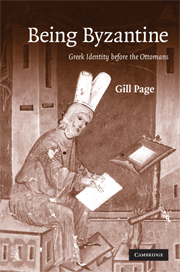Book contents
- Frontmatter
- Contents
- List of illustrations
- Acknowledgements
- A note on the use and transliteration of Greek
- Abbreviations
- Reference works
- Introduction: The Frankish conquest of Greece
- 1 Ethnic identity?
- 2 Byzantine identities
- 3 Niketas Choniates
- 4 The thirteenth century: ambition, euphoria and the loss of illusion
- 5 The nightmare of the fourteenth century
- 6 Meanwhile, a long way from Constantinople …
- 7 The long defeat
- 8 Roman identity and the response to the Franks
- Glossary
- Map 1 The Aegean region
- Map 2 The Peloponnese
- Appendix 1 Key content items
- Appendix 2 The origins of the Chronicle of the Morea
- Bibliography
- Index
4 - The thirteenth century: ambition, euphoria and the loss of illusion
Published online by Cambridge University Press: 24 November 2009
- Frontmatter
- Contents
- List of illustrations
- Acknowledgements
- A note on the use and transliteration of Greek
- Abbreviations
- Reference works
- Introduction: The Frankish conquest of Greece
- 1 Ethnic identity?
- 2 Byzantine identities
- 3 Niketas Choniates
- 4 The thirteenth century: ambition, euphoria and the loss of illusion
- 5 The nightmare of the fourteenth century
- 6 Meanwhile, a long way from Constantinople …
- 7 The long defeat
- 8 Roman identity and the response to the Franks
- Glossary
- Map 1 The Aegean region
- Map 2 The Peloponnese
- Appendix 1 Key content items
- Appendix 2 The origins of the Chronicle of the Morea
- Bibliography
- Index
Summary
GEORGE AKROPOLITES AND THE RISE OF NIKAIA
George Akropolites and George Pachymeres both had strong associations with the Byzantine Roman state based in Nikaia, in Asia Minor, one of the two states of any consequence that arose among the Romans in response to the disaster of 1204. The Empire of Nikaia was founded by Theodore Laskaris, a son-in-law of the emperor Alexios III Angelos. Escaping from the City in 1204, Laskaris had swiftly organised armed resistance to the Latins in Asia Minor where, thanks in large part to the tribulations of the Latin empire and despite having to deal with various rivals, he eventually organised something like a new imperial state in Nikaia. In 1208, on the appointment of a new ecumenical patriarch, he had himself crowned emperor. Fourteen years later he handed over a strong state to his successor John III Vatatzes, who brought the empire of Nikaia to its zenith.
The historian George Akropolites was born around 1217 to wealthy Roman parents in Latin-ruled Constantinople and received his early education in the City, before moving to Vatatzes' Nikaia in 1233 to complete his education (Akropolites, History 46.12–15). He comments that his father wanted to ‘release him from the hands of the Latins’ (History 46.15); he was then sixteen, so of an age to proceed to the advanced education required for a distinguished career. He became a student of Nikephoros Blemmydes, the leading scholar of Nikaia and, from 1240, the tutor of the future emperor Theodore II Laskaris (History 49.23–50.4).
- Type
- Chapter
- Information
- Being ByzantineGreek Identity Before the Ottomans, 1200–1420, pp. 94 - 137Publisher: Cambridge University PressPrint publication year: 2008



